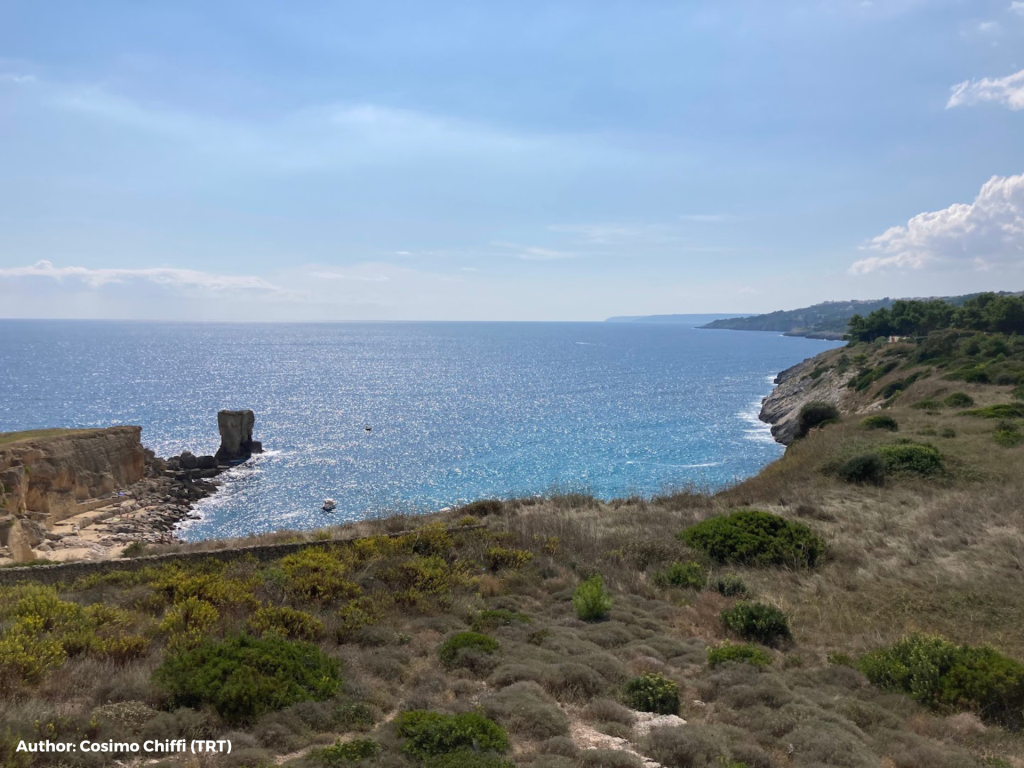The AI SMART project, among its main activities, has foreseen the creation of an innovative and interactive cross-border ICT Platform on the services offered by the network of ports in the areas of interest of Greece and Italy. The platform which, in addition to the “Ports and Services”, “Points of Interest”, “Transport and Routes” sections, also includes the “Routes” section, identifies the most significant and representative places of the Apulian and Greek territories involved in the project and provides practical and detailed information on itineraries of historical, environmental and cultural interest created for the use of the existing local heritage. The analysis and mapping of these resources has made it possible to identify and create two other tourist itineraries, in addition to the already existing ones dedicated to the discovery of the villages among the olive groves and vineyards and of the cultural and naturalistic heritage present between the Taranto Murge and the finibus terrae. The new itineraries, which encourage sustainable mobility, wind between the port of Otranto and the Salento hinterland and promote sustainable and inclusive tourism, in harmony with the environmental, landscape, historical and cultural resources of the area. All information, places and points of interest can be consulted on the AI SMART ICT Platform!
The first itinerary identified is called “From Otranto to Maglie amidst menhirs, Greek-Byzantine atmospheres and views of Italy’s most easterly coastline” and starts from the historic city of Otranto to continue towards the countryside and the Salento hinterland, along the northern slope that leads to the town of Palmariggi, where the two circular towers of the Aragonese Castle dominate together with the Sanctuary of Montevergine, built in 1707 on a rock church that still houses a precious Byzantine icon. The itinerary continues towards the small town of Bagnolo del Salento where, in the central square, there are the Church of San Giorgio and the Papal Palace and where it is possible to visit the “Croce” menhir, four meters high, whose origin dates back to the early Middle Ages. At about 1 km it is possible to reach Cursi, a town famous for Lecce stone thanks to the large number of quarries from which the raw material is extracted and used for the facades of palaces and churches whose style is better known as Baroque , until you reach Maglie, the most populous center of Idruntina with its historic center full of monuments and which has its fulcrum in Piazza Aldo Moro, named after the statesman and former Italian Prime Minister who was born here.

The itinerary then crosses the towns of Scorrano, a small town characterized by narrow and winding streets, and Muro Leccese. After leaving Muro Leccese and before returning to Otranto, there is the “La Cutura” botanical garden, an estate of about 50 hectares considered one of the most successful experiments in modern botanical collecting in Italy.
The second itinerary “From Poggiardo to the south coast among Messapian warriors, landing places and karst caves“, is located in the southern area of Otranto and crosses various inhabited centers and countryside, where there are important points of interest. Along the way, the first concerns the Parco dei Guerrieri di Vaste, an archaeological area of about 20 hectares, marked by a majestic access portal. Excavations have brought to light the remains of Bastae, one of the most important centers of Messapia. The itinerary continues towards Ortelle where, among the various cultural attractions, there is also the crypt of the Madonna della Grotta dating back to the XIII century. Leaving Ortelle, the route continues among olive trees and dry-stone walls until it reaches the “old road” for Castro which reaches Spongano, a place that houses the ancient castle, later transformed into a palace by the Bacile di Castiglione barons. The itinerary continues reaching Diso and Vignacastrisi (fraction of Ortelle), to then reach Marittima (fraction of Diso), through a part of the itinerary of the Via Francigena del Sud, and Andrano whose castle dates back to the XIII century.

From Andrano continue to Castro, a place that takes its name from the ancient Castrum Minervae due to the presence of a temple consecrated to Minerva or Athena, according to Greek mythology. This is the place where, according to legend, Aeneas landed during his trip to the Mediterranean. Just outside the town, going up the coast road, is the Zinzulusa cave, the only Italian karst site among the ten in the world indicated by the Karst Waters Institute (KWI) as worthy of protection. The route ends with the towns of Porto Miggiano and Santa Cesarea Terme, where there are the Raffaella and Sticchi villas, inlaid with arabesque motifs.